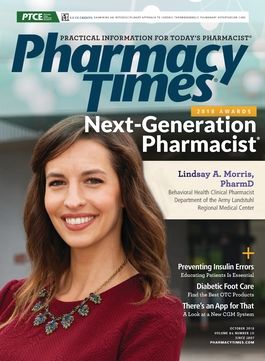Publication
Article
Pharmacy Times
An Unsafe Practice: Reuse of Prefilled Saline Flush
Author(s):
Unsafe injection practices have affected over 150,000 patients since 2001 and have led to more than 50 documented outbreaks of bacterial infections or viral hepatitis, according to the CDC.
Unsafe injection practices have affected over 150,000 patients since 2001 and have led to more than 50 documented outbreaks of bacterial infections or viral hepatitis, according to the CDC.1
Although many practitioners follow the CDC’s safe injection practices guidelines,2 the results of a survey of more than 5000 practitioners about the use of needles, syringes, and vials suggest that some may be placing patients at risk of transmission of bloodborne diseases.3 One percent of the survey respondents admitted to always or sometimes reusing a syringe for more than 1 patient.
The Institute for Safe Medication Practices (ISMP) first learned about the unsafe practice of reusing a prefilled saline flush syringe from a 2013 statement issued by a New York hospital that was investigating possible disease transmission in 236 patients hospitalized during a 3-month period.4 In that case, a single nurse had been reusing prefilled saline syringes to flush the intravenous lines of multiple patients, mistakenly thinking the practice was safe. No cases of disease transmission had been identified at the time of the statement.
More recently, a nurse who worked in a telemetry unit of a Texas hospital had been reusing prefilled saline syringes to flush the lines of multiple patients, which led to a case of hepatitis C transmission.5 The unsafe practice was discovered after noticing that the nurse would often leave a partially filled saline flush syringe near a computer work station. When a nurse manager investigated this practice, the nurse voluntarily reported reusing syringes during the previous 6 months, thinking that it was cost-effective and safe if no fluids had been withdrawn into the syringe prior to injecting the saline. The nurse had been working on the unit for 18 months but had not been taught by other staff members that this was an unsafe practice.
Recommendations
Education. Provide initial orientation and annual education on injection safety and include new and temporary nurses, pharmacists, and pharmacy technicians. Assess and reinforce practitioner competence associated with even the most basic concepts of infection control and aseptic technique, including recognition that any form of needle andr syringe reuse is dangerous and should be prohibited.
Policies and procedures. Review organizational policies and procedures related to safe injection practices to ensure that the principles of aseptic technique, the CDC safe injection practice guidelines,2 infection control, and the ISMP Safe Practice Guidelines for Adult IV Push Medications6 have been incorporated.
Surveillance. Monitor adherence with proper injection techniques in all settings where medications are prepared and administered. Consider developing a checklist7 based on the CDC safe injection practices guidelines2 that can be used to conduct the surveillance process and collect the data. Syringe reuse, if identified, should be immediately corrected, and patients should always be notified of any potential exposure and the need for testing.5
Michael J. Gaunt, PharmD, is a medication safety analyst and the editor of ISMP Medication Safety Alert! Community/Ambulatory Care Edition.
References
- CDC. The One & Only Campaign website. oneandonlycampaign.org. Accessed September 7, 2018.
- Siegel JD, Rhinehart E, Jackson M, Chiarello L; Health Care Infection Control Practices Advisory Committee. 2007 guideline for isolation precautions: preventing transmission of infectious agents in health care settings. Am J Infect Control. 2007;35(10 suppl 2):S65-S164.
- Pugliese G, Gosnell C, Bartley JM, Robinson S. Injection practices among clinicians in United States health care settings. Am J Infect Control. 2010;38(10):789-798. doi: 10.1016/j.ajic.2010.09.003.
- Guthrie Corning Hospital alerts patients to possible saline flush syringe reuse [news release]. Corning, NY: Guthrie Health; February 7, 2013. guthrie.org/press-releases/guthrie-corning-hospital-alerts-patients-possible-saline-flush-syringe-reuse. Accessed September 7, 2018.
- Arnold S, Melville SK, Morehead B, Vaughan G, Moorman A, Crist MB. Notes from the field: hepatitis C transmission from inappropriate reuse of saline flush syringes for multiple patients in an acute care general hospital - Texas, 2015. MMWR Morb Mortal Wkly Recap. 2017;66(9):258-260. doi: 10.15585/mmwr.mm6609a4.
- ISMP. Guidelines for safe practice of adult IV push medications. ISMP website. ismp.org/guidelines/iv-push. Published July 23, 2015. Accessed September 7, 2018.
- ASC Quality Collaboration. Safe injection practices toolkit. ASC Quality Collaboration website. ascquality.org/safeinjectionpracticestoolkit.cfm. Accessed September 7, 2018.







